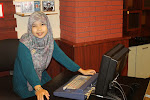The levels
of education in Ireland are primary, secondary and higher (often
known as "third-level") education. In recent years further education has grown
immensely. Growth in the economy since the 1960s has driven much of the
change in the education system. Education in Ireland is free at all levels,
including college (university), but only for students applying from the European Union. For Universities
there are Student Services Fees (up to €2,000 in 2011) which students are
required to pay on registration, to cover examinations, insurance and
registration costs.
The Department
of Education and Skills, under the
control of the Minister
for Education and Skills, is in
overall control of policy, funding and direction, whilst other important
organisations are the National
Qualifications Authority of Ireland, the Higher Education
Authority, and on a local level the Vocational
Education Committees are the
only comprehensive system of government organisation. There are many other
statutory and non-statutory bodies which have a function in the education system.
The current Minister for Education is Ruairi Quinn.
All children must receive compulsory
education between the ages of six and fifteen years, and all children up to the
age of eighteen must complete the three years of post-primary. The Constitution of Ireland allows this education to be provided in the
home; this has caused much legal wrangling for years as to the minimum
standards required for home education since the constitution does not
explicitly provide for the State to define these minimum standards.
In 1973 the requirement to pass the Irish language in order to
receive a second-level
certificate was dropped although a student attending a school which
receives public money must be taught the language. Certain students may get an
exemption from learning Irish; these include students who have spent a
significant period of time abroad or students with a learning difficulty.
English is the primary medium of instruction at all levels, except in Gaelscoileanna: schools in
which Irish is the working language and which are increasingly popular.
Universities also offer degree programmes in diverse disciplines, taught mostly
through English, with a few in Irish. Some universities also offer some courses
partly through other languages such as French, German or Spanish.
Education is compulsory for all
children in Ireland from the ages of six to 16 or until students have completed three years of second level
education and including one sitting of the Junior Certificate examination
although it is most common to start primary education aged four or five.












